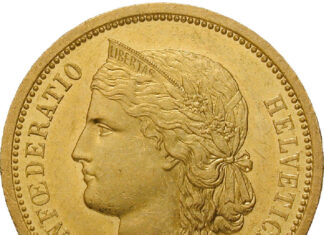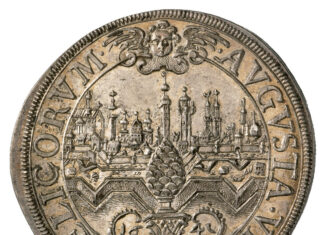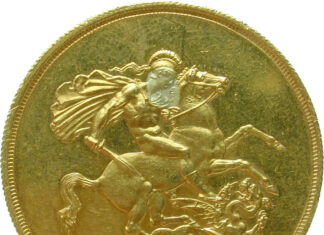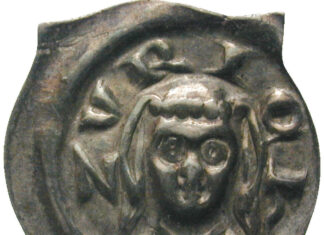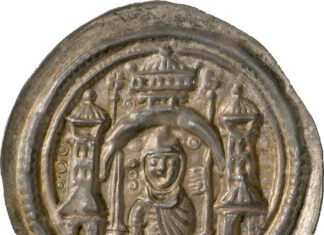Hard
Numismatic Puzzle: Reichstaler of Albrecht von Wallenstein (1627)
Today’s puzzle is a 1627 reichstaler of Albrecht von Wallenstein.
Numismatic Puzzle: St. Gaudens
US President Theodore Roosevelt thought his country’s coin designs were hideous. Renowned sculptor Augustus Saint-Gaudens was commissioned to design some new coins for him. The result: a majestic Lady Liberty, as featured on this 20-dollar coin from 1916.
Numismatic Puzzle: Colorado Peaks
The US state of Colorado attracts mountaineers and nature lovers with its high summits. Therefore, they represent Colorado, which officially joined the United States in 1876 as the 38th state, in the 50 State Quarters Program.
Numismatic Puzzle: The Ideal Swiss Woman
In 1883, Switzerland introduced a new 20-franc gold coin, the highest denomination at the time. Instead of a head of state, the republican Confederates put the ideal of a Swiss woman on the obverse: Helvetia.
Numismatic Puzzle: Augsburg
Rich Augsburg could afford to build massive fortifications. However, they did not stop the Swedes from conquering the city in the Thirty Years’ War. When this taler was minted in 1641, the Bavarians had just driven out the Swedes – but not for long. And Augsburg bled.
Numismatic Puzzle: Saint George and the Dragon
In 1817, the engraver Benedetto Pistrucci created a truly evergreen design for the Royal Mint. His interpretation of England’s patron saint, the dragon-slayer George – shown here on a coin of Queen Victoria from 1887 – is still used on British coins today!
Numismatic Puzzle: Gian Galeazzo Maria Sforza
This gold double ducat from c.1475 depicts Gian Galeazzo Maria Sforza. In name – and in name only – the youth was Duke of Milan as he was under constant guardianship until his early death. What remains are coins minted for him depicting splendid Renaissance portraits.
Numismatic Puzzle: Medieval Women Power in Switzerland
As a sign of their power, the abbesses of the Fraumünster in Zurich had the right to mint coins. But by the time they decided to depict themselves on their issues, as on this late 13th-century pfennig, they had already had to surrender much of their power to the citizens of the town.
Numismatic Puzzle: Albert the Bear
In the 12th century, Albert the Bear gradually expanded his territory until the royal chancellery bestowed his conquests to him as the Margraviate of Brandenburg. How did he present himself? Put together an image of Albert depicted on one of his denarii.
Numismatic Puzzle: A Rebellious Mint Master
According to its reverse, this denarius of Louis the Pious was minted in Venice. But the lagoon city wasn’t even ruled by the Carolingians! How is this possible? Does this coin testify to a plot of the mint master against his doge? …






